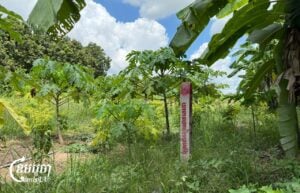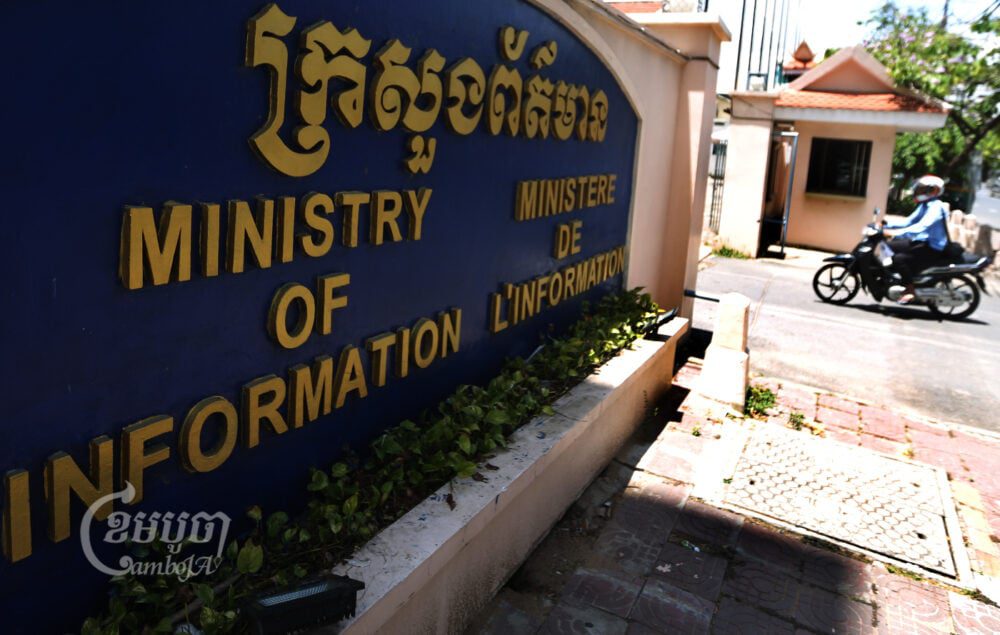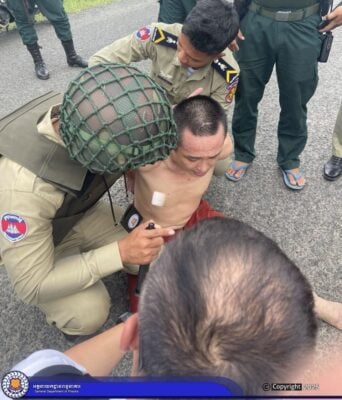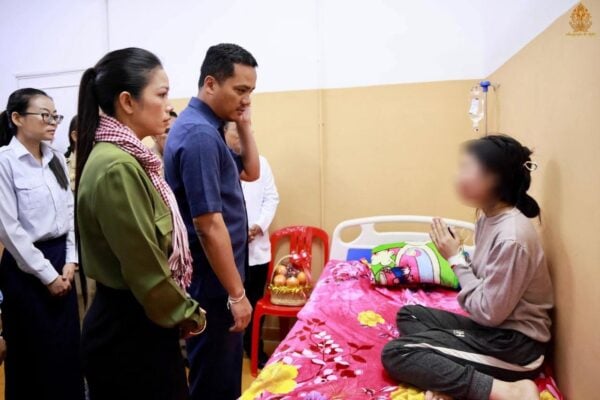Listen to the audio version of this article (generated by AI).
Cambodia’s government keeps announcing new raids, new arrests, and new crackdowns. In July 2025 alone, authorities said they detained more than 2,100 people at dozens of sites across the country. But beneath the headlines, the architecture of Cambodia’s online-scam economy still hums along fueled by coerced labor, opaque money flows, and a justice system that rarely touches the owners and financiers who matter. The result is a cycle that looks busy but changes little.
The core problem is structural, not operational. The 2025 U.S. Trafficking in Persons Report (TIP) again ranks Cambodia at Tier 3, the lowest category and calls on Phnom Penh to “investigate and prosecute traffickers and operators… including government officials.” That last clause is telling. The report documents official interference and intimidation around investigations into scam compounds, a pattern that makes sporadic raids performative rather than transformative. When enforcers fear or serve the politically connected, enforcement stalls at the gates.
Independent documentation of abuses has only grown more detailed. In June 2025, Amnesty International published a 70-page investigation cataloging forced labor, torture, child labor, and deprivation of liberty across 50+ compounds, with survivors describing electric shocks, beatings, and 18-hour shifts under threat. Amnesty’s conclusion was blunt. The government has deliberately ignored large-scale abuses, enabling an industry that now looks like a carceral system masquerading as commerce.
United Nations human rights experts added urgency a month earlier, urging immediate rights-based action to tackle forced labor and forced criminality in scam centers and to prioritize victim identification and protection rather than mass detentions. That standard is incompatible with roundup-style operations that treat trafficked workers as criminals first and as victims, if at all, later.
If the state were dismantling the business model, you would see prosecutions at the top; for example, landlords who lease entire hotel towers to operators; financiers who move the proceeds; security contractors who run the fences and the beatings. Instead, 2025’s enforcement optics skews toward volume. Hundreds or thousands detained while impunity for owners and enablers remains the rule. That’s why publicized raids keep giving way, months later, to fresh exposés of new compounds or the same complexes back under different management. The Global Initiative has tracked how the industry relocates, fragments, and diversifies in response to pressure, a sign that tactical policing without structural accountability just rearranges the map.
Meanwhile, those who shine a light on the system pay a price. Human Rights Watch reported in October 2025 that journalists who reported on cyber-scam compounds have faced arrests, intimidation, or coerced confessions. That intimidation doesn’t only silence whistleblowers; it also deprives prosecutors of precisely the testimonies and documents needed to flip insiders and climb the command chain.
It’s telling that the year’s most consequential moves against Cambodian scam networks came from outside Cambodia. On September 8, 2025, the U.S. State Department announced coordinated sanctions on online-scam centers across Southeast Asia, citing at least $10 billion in losses for Americans in 2024. A month later, on October 14, the U.S. Treasury unveiled the largest action to date against the ecosystem enabling these crimes, describing compounds in Cambodia where workers are coerced and profits laundered through complex crypto and payment channels.
These actions were not symbolic. Reuters reported that U.S. sanctions hit ten Cambodia-linked targets in September, part of a region-wide push to cut financial lifelines and expose ownership structures behind compounds. That logic follows, the money, freeze the assets, name the owners, is the inverse of Cambodia’s raid-and-deport model.
Financial-crime regulators also zeroed in on the plumbing. In May 2025, the U.S. Financial Crimes Enforcement Network (FinCEN) proposed designating Cambodia-based Huione Group a primary money-laundering concern, alleging it moved billions tied to cyber scams (and even funds linked to North Korean activity). Whatever the outcome, the episode underscores how payment processors, shadow banks, and crypto rails are as critical as the compounds themselves. Without targeting those rails, arrests at the edge won’t dent profits at the core.
Supporters of Phnom Penh’s approach argue that 2025’s numbers, thousands detained, dozens of sites raided, prove seriousness. But the rights-based critique isn’t that nothing happens; it’s that the wrong things happen in the wrong order. Mass detentions that sweep up trafficked workers, while landlords and financiers remain untouched, reproduce the problem. That is precisely why Amnesty urged Cambodia to identify and protect victims and to investigate compound landlords and managers, not just frontline staff.
There is also a regional cost to ineffective action. South Korea, Germany, and others have opened investigations and made arrests tied to Cambodia-linked scams, while public outrage in Seoul has become a domestic political issue. The longer major hubs inside Cambodia remain operational, the more other states will internationalize the response through sanctions, criminal indictments, or restrictions targeting Cambodia-based platforms and banks.
So what would effective action look like?
First, shift the metric of success from arrests to convictions of owners, financiers, and complicit officials with public charges, evidence, and court records. The TIP report’s call to pursue government officials is a blueprint; anything less signals impunity.
Second, adopt a victim-centered model: formal screening at raid sites; safe-harbor provisions; temporary status for foreign victims; and partnerships with independent NGOs to provide legal aid. This isn’t moral window-dressing; survivors are your best witnesses against the bosses if they trust the system not to jail or deport them.
Third, go where the money goes. Join or mirror external actions e.g., sanction facilitators, revoke licenses, and seize assets tied to compounds and payment channels. That means empowering Cambodia’s anti-money-laundering bodies to investigate crypto off-ramps, shell companies, and correspondent accounts, and cooperating with foreign Finance Intelligence Units rather than dismissing their findings as foreign meddling.
Fourth, stop shooting the messengers. Drop politicized cases against reporters and activists who document scam compounds and illegal detention. A government confident in its mandate does not fear evidence; it prosecutes it.
In the end, it comes down to incentives. As long as compounds remain profitable, payment rails remain open, and owners remain untouchable, Cambodia’s highly publicized operations will keep netting expendable labor while the real business survives to scam another day. The international community has signaled it is willing to go after the beneficiaries with sanctions, asset freezes, and criminal complaints. Whether Phnom Penh is willing to do the same at home is the only question that matters. The world, and thousands of trafficked people trapped behind compound fences, are watching.
Note: Seng Vanly, Advocacy Program Director of the Khmer Democracy Organization (KDO)











